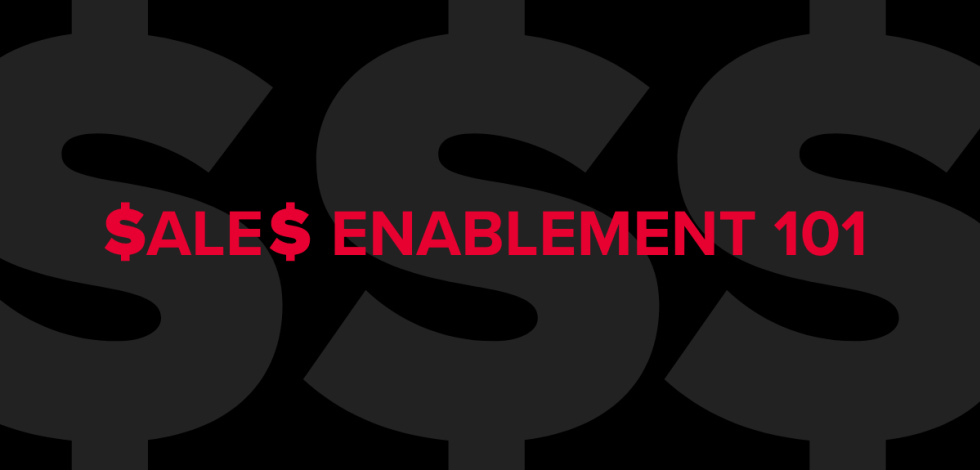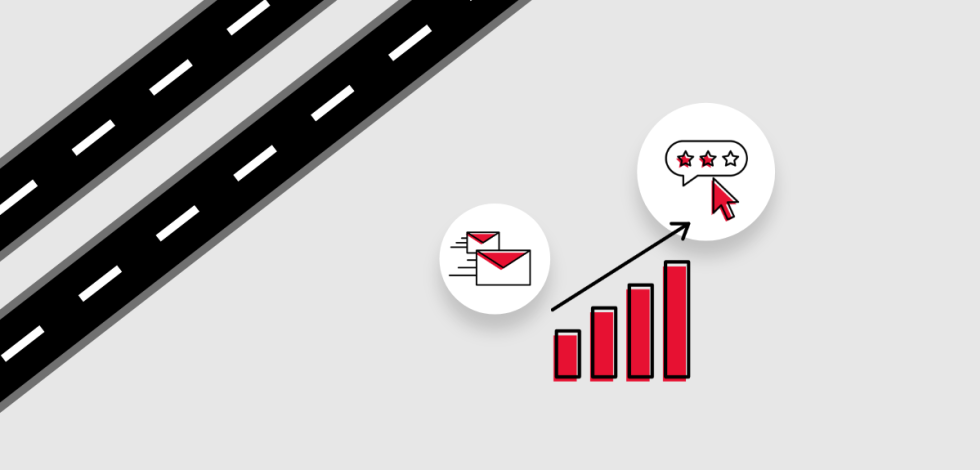When creating a marketing campaign, you want to develop a streamlined, cohesive setup that helps support optimal conversion rates.
Research by HubSpot found that according to buyers, the most effective ways to create a positive sales experience include:
- Listen to their needs (69 percent)
- Don’t be pushy (61 percent)
- Provide relevant information (61 percent)
- Respond in a timely manner (51 percent)
To find success with encouraging users to take an action, you’ll need to align with the above. But how can you set up your campaign to find this success?
Set Campaign Goals
By having one defined goal, you can curate your messaging and creative to effectively support what your business wants to achieve.
Understanding your target audience and where they are in the buyer’s journey is a strong first step. The buyer’s journey focuses on:
- Awareness: The buyer realizes he or she has a problem.
- Consideration: The buyer defines the problem and researches an option.
- Decision: The buyer chooses a solution.
Determine where your target is at in the buyer’s journey—then set specific campaign goals based around what your audience needs.
These can include:
- Increasing traffic to specific landing pages
- Improving overall brand awareness
- Enhancing company thought leadership
- Improving lead nurturing and generation opportunities
- Expanding your company’s email send list
- Expanding conversions and sales
You’ll want to ensure these goals are specified and have a set timeframe, so once you decide on an action, then set a more exact goal. If your goal is to increase landing page traffic, what percentage growth do you want to see? What timeframe do you want to see it achieved by? By identifying a specific measurement of growth and timeframe for this growth, you’ll be better suited to track success or determine if adjustments are needed.
When you make goals that are specific, measurable, attainable, relevant and time-bound, you're increasing your odds for success by verifying that the goal is achievable, identifying the metrics that define success and creating a roadmap to get to those metrics.
–HubSpot
Once your goals are set, you can determine which tactics are most applicable for your overarching campaign.
Determine Your Campaign Tactics
Don’t assume that creating ads is all that is needed for a successful campaign. You need to focus on the entire journey that you want your audience to take—from first engagement to completing an action. While ads are a crucial part of any campaign, they are just one step toward getting people to provide their information or take an action.
Prioritize putting together a multi-channel campaign that will incorporate various touchpoints to help nurture your target through the process.
These can include:
- Customized landing pages
- Emails
- Google Ads
- Social media ads
By building a multi-channel approach, you’re able to provide a thorough customer journey. This, in turn, will support the appropriate amount of nurturing needed to help convert someone into a potential lead—or even a sale.
After you’ve determined your tactics, you’ll need to ensure your internal teams are aligned, including copywriting and creative design, on how to enhance all creative touchpoints for optimal conversions.
Optimize Your Campaign Tactics
You don’t want to overwhelm your audience or make them feel like you’re asking them to take an action too early. Instead, create a campaign that takes your audience on a journey that makes them want to take an action, like providing contact information.
Value Proposition + Call-to-Action
By focusing on your value and your one call-to-action, you can improve your key campaign tactics—and ensure ongoing engagements and conversions.
Landing Pages
It’s important to understand that a landing page is different than just a page on your website. A landing page is built and targeted around a specific campaign and helps complete the campaign action. For example, if you are sending an email promoting an eBook, your landing page would be developed to continue that message and encourage an action around that eBook, like providing contact information to download the resource.
By investing in a dedicated landing page that ties in with your advertising campaign, you can ensure that your audience will land on a page that maintains the voice of the ad, continues the message and enables the user to finish the journey of the campaign. This unique landing page can continue the tailored messaging of the ad and support better conversions.
In our experience with landing page creation, we’ve discovered that if a page is too long, people will not even scroll to read all of the information. Instead, they only take in the information toward the top, then discontinue their interaction with the page.
To help properly engage your audience, try integrating the below into landing page development:
- Use a benefit-focused headline
- Curate a streamlined, specific message around your campaign goal
- Include a standout and specific call-to-action
- Only ask for what you need—don’t overwhelm your audience by asking for too much
- Make the user experience easy with a responsive design and simplified navigation
- Optimize for search with strategically placed keywords
Additionally, if your goal is centered around capturing leads, you may consider adding a form to your landing page to obtain contact information. But just like the landing page itself, make sure the form is short and concise—ask for as little as possible at this stage. You’ll have the opportunity to gain more information later.
Follow the two golden rules of obtaining contact information:
- We must give before we ask.
- Every step of the marketing process must be valuable.
–Nicole Kusmich, strategic marketing consultant
You don’t want to put too much pressure on your audience right away to provide a large amount of information about themselves. This may deter them and ultimately have a negative impact on your overall campaign success. Use your landing page to entice people. Provide a value, position yourself as trustworthy—and then ask for an email address. You should then take this landing page and make it the support piece for all of your other campaign tactics.
Email continues to be a powerful way to reach your customers with targeted and personalized messaging, and it’s an integral part of any marketing campaign.
80% of business professionals believe that email marketing increases customer retention, and 59% of marketers say email is their biggest source of ROI.
–HubSpot
Remember: Coming back to your goals is crucial for finding success with your emails and is a strong first step in creative development. For example, a newsletter will differ from a campaign email and may end up having multiple calls-to-action because your goal is education and thought leadership with existing email subscribers. A drip campaign, though, may have the goal of nurturing a potential new lead and therefore, you’d want one call-to-action to better focus that target.
In general, though, your audience wants to be able to quickly digest your message and understand the action you want them to take. Often, brands bury the primary message or integrate too much messaging. That’s why curating a simplified email marketing approach is crucial.
Your emails should always include a destination for your consumers, such as your landing page, that encourages them to take action on something. Make sure your emails work in tandem with your landing page rather than repeating all of the same information. Develop an email that provides sufficient information to entice a reader to click—then let the landing page do the educational work to encourage your audience to take a relevant action.
Consider the below when building your campaign emails:
- Make your subject line accurate, authentic and concise, keeping it between 30 to 50 characters
- Try integrating personalization in the subject line or body of the email
- Keep your primary message, as well as the call-to-action, upfront to avoid burying the most pertinent information
- Match the email with your campaign landing page, creating a uniform headline, copy and content focus
- Use the five-second test to determine if your call-to-action can be quickly identified, ideally within five seconds of opening the email
- Include minimal variation in fonts or typefaces to avoid a cluttered look
By creating thoughtfully designed and simplified emails, you’ll increase the likelihood of a click-through and a subsequent action on your landing page.
Google Ads
Google Ads (formerly Google AdWords and Google AdWords Express) is an online advertising solution that businesses can use to promote their products and services on Google Search, YouTube and other sites across the web. Google Ads allows advertisers to choose specific goals for their ads, like driving phone calls or website visits.
By leveraging smart technology, Google Ads helps get your ads in front of potential customers at the moment they’re ready to take action. Ultimately, Google Ads can be a strong supporter for driving landing page traffic—and eventually conversions.
Tailor your display ads to the different stages of the purchase funnel. Delivering the right message at the right moment can encourage response and help guide customers to purchase.
–Google Ads Help
With Google Ads, short and specific messaging is crucial for a successful campaign. You should focus on curating messaging that focuses on one value proposition and one call-to-action. Ensure that your Google Ads placements lead to that campaign-specific landing page, as the user experience after a click is just as important as the user experience with the ad itself.
Consider the below as you build your Google Ads:
- Incorporate keywords to match your ad copy with search intent as best as possible
- Develop messaging that focuses on user benefits
- Integrate a specific call-to-action, as generic language can decrease engagement
- Test your ad versions to determine which messages most strongly resonate with your audience, then tailor your ad text around that
- Test both long and short headlines to see which performs better with your audience, then adapt text accordingly
Focus on your company’s value—and the benefit it offers customers—to create simplified Google Ads that increase the opportunity for click-throughs and conversions.
Social Media Advertising
Social media advertising provides a targeted way to get in front of your audiences, allowing you to market on the channels your business is most active on, including Facebook and LinkedIn. Because of declining organic reach across social channels, paid advertising plays an integral role in maintaining channel growth and engagement.
It’s important to complete initial research to determine which platforms your audience is most active on so that you properly allocate your budget. You may believe that your priority should be Facebook advertising, but research could show your audience is more active on LinkedIn. Monitor the performance of your organic content across all channels and determine where your brand is getting the most traction. It may also help to do some high-level competitive analysis and establish where your top competitors are seeing the most success, then look for opportunities to compete with them or stand apart.
Just like with Google Ads, a concise and clear message is key—both in the copy and the imagery. Brands should focus on content that is relevant, short and authentic. By providing a clear value to your audience, you’ll be better suited to find success on the channel.
Some best practices that can be applied across social channel advertising include:
- Customize the ad goal to align with the overarching campaign goal
- Keep copy concise and to the point—while still being engaging
- Keep text on the image to a minimum to help the ad look more organic in feeds; less than 20 percent text for an image is recommended
- Ensure video content can be understood without audio
- Try to directly address your audience
- Include one strong call-to-action like “Download” or “Request a Quote”
- Lead to a campaign-specific landing page to prioritize the audience taking a specific action
Aligning your ad creative with the above best practices for copy and imagery will help your company establish success on its social channels.
Continue the Conversation
If your campaign goal was lead generation—and you were successful—your work isn’t done when the campaign ends. The next step is determining how to use your new contacts.
Focus on lead nurturing immediately following the end of the campaign; a timely follow-up is key for successful engagement. Based on an interaction with your campaign, you know what they are interested in—and because they provided contact information, you know they may be interested in taking the next step. Capitalize on this by nurturing the lead promptly with additional resource content or personalized communications.
The odds of converting a lead into a sales opportunity are exponentially higher when the lead is contacted immediately following a website conversion.
–HubSpot
Follow-up can include:
- A personalized email with a coupon or special code for a discounted rate on a product or service
- A resource-based email with additional relevant educational content, including articles and videos
- A phone call (if the phone number was provided during a form-fill)
- Retargeting ads
By prioritizing timely and relevant follow-up communications, you'll be better positioned to convert for a sale.
Evaluate Campaign Performance
You can’t determine your campaign success if you aren’t measuring the overarching performance metrics. Take the time to analyze your campaign while it is running, as well as final metrics when it ends. You want to maximize your results while you are running the campaign, so it’s necessary to keep a close eye on performance and adjust the campaign, as applicable.
Revisit Your Goals and Creative
The goals you set at the beginning of your campaign will maintain their importance throughout your entire campaign. Revisit your goals, then track those against your campaign’s performance.
For example, if your click-through rate is lower than you were hoping to achieve, take the time to re-evaluate your campaign creative. Does the copy clearly identify a call-to-action? Is the call-to-action prominent within the design? Determine how you can tweak your creative to better align with your campaign goal—then adjust accordingly.
Integrate Query Strings
You also need to integrate query strings into your campaign setup. A query string (also known as a UTM code or click-through URL) is an important tool for more comprehensive metrics tracking. These small codes are attached to the end of a URL and allow Google Analytics to more accurately track referral data. By including query strings with your URLs, you can see how people navigate through your website or landing page once they click.
“With query strings, you can track exactly how many page visits directly happened as a result of your social media posts or email marketing campaigns. This can help you build future campaigns and allow you to strategize and deploy content that is relevant to your audiences.”
– Kelsey Ferencz, director of web development at Concentrek
Best practices for query strings include:
- Keep URLs clean, descriptive and easy to read
- Avoid using spaces within your query string; instead, integrate underscores or dashes
- Stay consistent with lowercase text
- Track your UTM links inside a spreadsheet
Centralize Data Measurement
Your campaign is going to include multiple tactics—meaning data from a variety of places. By creating a centralized dashboard in a platform like Google Data Studio, you’ll have a snapshot of overall campaign performance. This will help you more holistically track performance and identify gaps and successes in your overall campaign approach.
From here, determine which tactics to continue prioritizing, which to scale back on and which to adapt for more conversions.
Wrapping It Up
The key for optimal campaign conversions is focusing on a single value proposition and a specific call-to-action. Cluttering your creative with too much copy, numerous calls-to-action or overwhelming design can deter your audience and have a negative impact on campaign performance.
Instead, focus on simplifying. Find your one message—then prioritize that.
Take the Next Step
Ready to work with a team skilled in creating optimized, multi-channel campaigns? Reach out to us today.




